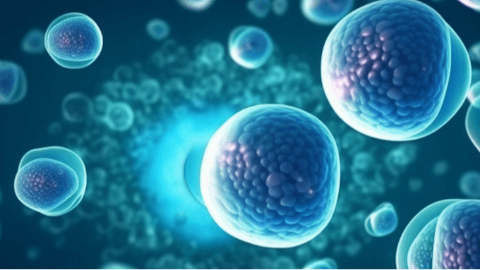预约演示
更新于:2025-05-07
PIK3R4
更新于:2025-05-07
基本信息
别名 p150、Phosphoinositide 3-kinase adaptor protein、Phosphoinositide 3-kinase regulatory subunit 4 + [6] |
简介 Regulatory subunit of the PI3K complex that mediates formation of phosphatidylinositol 3-phosphate; different complex forms are believed to play a role in multiple membrane trafficking pathways: PI3KC3-C1 is involved in initiation of autophagosomes and PI3KC3-C2 in maturation of autophagosomes and endocytosis. Involved in regulation of degradative endocytic trafficking and cytokinesis, probably in the context of PI3KC3-C2 (PubMed:20643123). |
关联
100 项与 PIK3R4 相关的临床结果
登录后查看更多信息
100 项与 PIK3R4 相关的转化医学
登录后查看更多信息
0 项与 PIK3R4 相关的专利(医药)
登录后查看更多信息
206
项与 PIK3R4 相关的文献(医药)2025-07-01·Experimental Neurology
Identification of NMT1/MA/VPS15 signal pathway as potential therapeutic target in rat cerebral ischemia injury
Article
作者: Chen, Juan ; Wan, Qi ; Bao, Shuguang ; Bu, He ; Shen, Na ; Liu, Rui ; Wang, Yajie ; Li, Zhuo ; Wang, Hui ; Dong, Shan ; Lin, Tao ; Ma, Wenlong
2025-04-01·General and Comparative Endocrinology
Coordinated regulation of the hypothalamic–pituitary–somatotropic axis in Chinese sea bass (Lateolabrax maculatus) under temperature and salinity changes
Article
作者: Zhou, Tianyu ; Chen, Junyu ; Cheng, Jie ; Li, Juyan ; Zhang, Lingqun ; Lu, Wei
2025-03-21·Leukemia & Lymphoma
Proteomic profiling identifies classic Hodgkin lymphoma patients at risk of bleomycin pulmonary toxicity
Article
作者: Andersen, Maja Dam ; Ludvigsen, Maja ; Starklint, Jørn ; Hamilton-Dutoit, Stephen Jacques ; Honoré, Bent ; Lauridsen, Kristina Lystlund ; Wolter, Katharina ; d’Amore, Francesco ; Enemark, Marie Hairing ; Kamper, Peter
5
项与 PIK3R4 相关的新闻(医药)2024-12-15
·精准药物
为了应对生理条件的变化,细胞需要各种类型的细胞凋亡程序。近日,Developmental Cell 期刊以「Voices」专栏发表了题为 The story behind the emergence of different forms of cell death 的文章,并特别邀请了该研究领域的科学家讲述他们参与识别和解析细胞凋亡通路背后的故事,并讨论此类研究的未来方向。中国科学院外籍院士、美国国家科学院院士、中国科学院有机化学所生物与化学交叉研究中心主任袁钧瑛受邀采访。近 40 年来,袁钧瑛院士始终致力于细胞凋亡机制的研究,不仅世界细胞凋亡研究领域的开拓者之一,同时也是世界上第一个细胞凋亡基因的发现者!
2024 年 1 月 4 日,袁钧瑛团队与中国科学院上海有机化学研究所许代超团队合作在 Nature Structural & Molecular Biology (IF = 12.5)上发表题为 Reduction of DHHC5-mediated beclin 1 S-palmitoylation underlies autophagy decline in aging 的文章。该文章研究了衰老如何导致自噬下降,以及蛋白质 S-棕榈酰化在此过程中的作用。该研究展示了蛋白 S-棕榈酰化在自噬中的作用。Beclin 1 是自噬的关键调节蛋白,其与 VPS34、ATG14L 和 VPS15 结合形成 PI3KC3-C1 复合物,促进自噬体的形成。该研究发现棕榈酰酰基转移酶 DHHC5 通过介导 beclin 1 的棕榈酰化来调节自噬,这反过来又通过促进 beclin 1 与适配器蛋白 ATG14L 和 VPS15 之间的疏水相互作用,来促进含有 ATG14L 的 III 类磷脂酰肌醇-3 激酶复合物 I 的形成及其脂激酶活性。进一步的研究表明,DHHC5 在衰老的人脑和非人灵长类动物脑中表达显著降低,这可能是导致自噬下降的原因之一。总的来说,这些研究结果揭示了衰老诱导自噬下降的一种潜在机制,并为开发治疗衰老相关疾病的药物提供了新的靶点。
图 1 相关研究(图源:Nature Structural & Molecular Biology)
2024 年 1 月 30 日,袁钧瑛团队与中国科学院上海有机化学研究所何凯雯团队合作在 Proceedings of the National Academy of Sciences of the United States of America(IF = 9.58)上发表题为 RIPK1 activation in Mecp2-deficient microglia promotes inflammation and glutamate release in RTT 的文章。该文章研究了 Rett 综合征(RTT)中 Mecp2 缺失在小胶质细胞中的作用及其与神经功能障碍之间的关系。研究发现抑制受体相互作用丝氨酸/苏氨酸蛋白激酶 1(RIPK1)激酶可改善 Mecp2 基因敲除小鼠发病后运动功能障碍的进展,并延长其生存期。研究发现,RIPK1 的激活促进了小胶质细胞中的氧化应激、细胞因子产生以及谷氨酸释放介导的兴奋性毒性相关基因的表达。此外,Mecp2 缺失的小胶质细胞释放高水平的谷氨酸,损害谷氨酸介导的兴奋性神经传递,并促进 GluA1 和 GluA2/3 蛋白的增加。总的来说,该研究揭示了 Mecp2 缺失在小胶质细胞中的作用机制,为 RTT 的治疗提供了新的思路。同时,该研究也强调了 RIPK1 抑制剂可能对其他神经炎症性疾病,如自闭症、精神分裂症、多发性硬化症、肌萎缩侧索硬化症、阿尔茨海默病和帕金森病也具有治疗潜力。
图 2 相关研究(图源:Proceedings of the National Academy of Sciences of the United States of America)
2024 年 3 月 7 日,袁钧瑛团队与中国科学院上海有机化学研究所许代超团队合作在 Molecular Cell(IF = 14.5)上发表题为 PARP5A and RNF146 phase separation restrains RIPK1-dependent necroptosis 的文章。该文章研究了程序性坏死,一种由 RIPK1、RIPK3 和 MLKL 下游信号通路介导的细胞死亡形式,以及 PARP5A 和 RNF146 蛋白如何通过相分离机制抑制程序性坏死。研究发现,在程序性坏死激活和 TAX1BP1 蛋白的招募下,PARP5A 和 RNF146 蛋白会发生相分离,形成类似液滴的凝聚体,对激活的 RIPK1 进行多聚 ADP 核糖化(PAR)和 PAR 化依赖性泛素化(PARdU)。此外,文章还发现,PARP5A/RNF146 复合物与 TAX1BP1 蛋白相互作用,并被招募到激活的 RIPK1 上,发挥抑制程序性坏死的作用。总的来说,这项研究揭示了相分离机制在细胞死亡调控中的重要作用,并为开发新型抗坏死药物提供了新的思路。
图 3 相关研究(图源:Molecular Cell)
2024 年 3 月 27 日,袁钧瑛团队与中国科学院上海有机化学研究所许代超团队合作在 Nature Cell Biology(IF = 17.3)上发表题为 Defective prelamin A processing promotes unconventional necroptosis driven by nuclear RIPK1 的文章。ZMPSTE24 是一种锌金属蛋白酶,负责将前体层蛋白 A 切割成成熟的层蛋白 A,而层蛋白 A 是核纤层的重要组成部分。该篇文章研究了 ZMPSTE24 缺陷导致的前体层蛋白 A 处理异常,并揭示了其导致细胞坏死和炎症的机制。研究发现,当 ZMPSTE24 缺陷时,前体层蛋白 A 会积累,导致早衰症等疾病。研究发现,积累的前体层蛋白 A 会招募 RIPK1 到细胞核,并在肿瘤坏死因子刺激下促进其激活。激活的 RIPK1 进一步促进 RIPK3 介导的 MLKL 激活,导致核膜破坏和细胞坏死。除此之外,研究人员还发现,RIPK1 和细胞坏死在 Zmpste24-/- 小鼠的多个组织中都被激活,而遗传抑制 RIPK1 或敲除 Ripk3 或 Mlkl 可以显著改善 Zmpste24-/- 小鼠的疾病表型并延长其寿命。总的来说,该研究揭示了 ZMPSTE24 缺陷导致的前体层蛋白 A 处理异常会导致细胞坏死和炎症的机制,并强调了 RIPK1 可能是治疗与前体层蛋白 A 相关的早衰症的一个潜在靶点。
图 4 相关研究(图源:Nature Cell Biology)
2024 年 5 月 25 日,袁钧瑛团队和美国赛诺菲公司 Dimitry Ofengeim 合作在 Nature Reviews Molecular Cell Biology(IF = 81.3)上发表题为 A guide to cell death pathways 的文章。细胞死亡是机体发育和成人体内平衡的重要组成部分。消除发育过程中多余的细胞对于保证正常的形态发生和器官发生是非常重要的。在成人生活中,消除自身反应性免疫细胞、癌细胞和受损细胞对体内平衡至关重要。细胞凋亡、坏死和焦亡是三种程序性细胞死亡方式。半胱氨酸蛋白酶 caspase 家族是程序性细胞死亡的关键调控因子。该研究介绍了内源性凋亡和外源性凋亡的机制,重点讲解了 BCL-2 家族蛋白、caspase 家族蛋白以及死亡受体在凋亡中的作用。其中,在细胞凋亡过程中,caspase 激活的级联介导信号转导和细胞破坏,而当激活的 caspase 切割 Gasdermins 时发生焦亡,Gasdermins 随后可以在质膜上形成孔。此外,该研究也解释了 RIPK1、RIPK3 和 MLKL 蛋白在坏死性凋亡中的作用,以及 TNF、FasL 和 TLR3 等配体如何激活坏死性凋亡。总的来说,该研究概述了主要的细胞死亡机制,重点介绍了它们复杂的调控和执行的最新见解,以及它们与人类疾病的相关性。
图 5 相关研究(图源:Nature Reviews Molecular Cell Biology)
2024 年 11 月 7 日,袁钧瑛团队和中国科学院上海有机化学研究所单冰、朱正江团队合作在 Nature Cell Biology(IF = 17.3)上发表题为 Spermidine mediates acetylhypusination of RIPK1 to suppress diabetes onset and progression 的文章。亚精胺一直以来被认为具有抗炎、抗衰老的保健作用,可以预防各种与衰老相关的疾病,但对其中的分子机制却尚不明晰。丝氨酸/苏氨酸蛋白激酶 1(RIPK1)是炎症和细胞死亡的关键调节因子,该研究发现 mNAT1 和 hNAT2 在受体相互作用 RIPK1 上可调节一种涉及乙酰化亚精胺的翻译后修饰,并将其命名为乙酰羟丁胺化(acetylhypusination)。该研究报道了亚精胺介导 RIPK1 acetylhypusination 修饰的分子机制,揭示了 NAT1 敲除可促进 RIPK1 激活及血管内皮细胞死亡而导致糖尿病的发生,进而认为运用亚精胺和 RIPK1 抑制剂能够抑制糖尿病的发生及其并发症的发展。研究结果表明,体内补充亚精胺可降低 RIPK1 介导的细胞死亡以及 NAT1 缺乏引起的糖尿病表型。此外,抑制 RIPK1 也可阻断 NAT1 缺陷小鼠血管病理介导的胰岛素抵抗和糖尿病肾病。该研究发现 RIPK1 介导的血管内皮细胞死亡和炎症对糖尿病的发生和发展起到了重要的作用,可以直接诱导 2 型糖尿病的发病,促进糖尿病血管并发症的发展以及难以治疗的肾损伤,这表明 RIPK1 是治疗代谢紊乱、糖尿病及终末期血管损伤并发症的重要靶点。总的来说,该研究强调了血管病理在糖尿病的发生和发展中起作用,并确定了 RIPK1 激酶的抑制是治疗 2 型糖尿病的潜在方法,为深入研究糖尿病的机理与开发新的治疗手段提供了重要的新思路。
图 6 相关研究(图源:Nature Cell Biology)
袁钧瑛院士四十年如一日将一生奉献给科学创新,为世界细胞凋亡研究领域奠定了研究基础,引发了全球众多的实验室从不同的角度开始对细胞凋亡进行系统的研究。目前,她带领团队发起了对科研「无人区」的挑战 - 开发通过调控细胞死亡,从而治疗某些神经退行性疾病的药物。最后,希望袁钧瑛院士及其团队能够取得丰硕的科研成果!
专家介绍(上下滑动查阅)
袁钧瑛 博士,研究员,博士生导师。袁钧瑛院士于 1977 年以上海市应届生高考第一名的优异成绩考入上海复旦大学生物化学专业。1982 毕业,获学士学位。同年考入上海第一医科大学(现复旦大学医学院)研究生院,并以优异成绩考入 CUSBMBEA 项目赴美国哈佛大学医学院攻读博士学位。1989 年获哈佛大学博士学位,同年进入麻省理工学院进行博士后研究。1990 受聘于哈佛大学医学院,任助理教授。1996 年任哈佛大学医学院副教授。2000 年至今任哈佛大学医学院终生正教授。袁钧瑛教授的主要研究目标是揭示哺乳动物细胞中调控细胞死亡的分子机制。袁钧瑛教授为开创两个主要的细胞死亡研究领域,包括细胞凋亡(apoptosis)和细胞坏死(necroptosis),做出了里程碑式的贡献。她的工作阐明了一系列在这两种细胞死亡方式中的关键驱动分子, 分子机制以及与人类疾病的关系。袁钧瑛教授曾兼任 Bristol-Meyers Squibb, Pfizer, GlaxoSmithKline, Aventis, Merck, Millennium, Amgen 等众多国际大型药物公司的顾问以及 Journal of Cell Biology、 Current Biology 等多个国际著名期刊的编委。袁钧瑛教授在细胞凋亡领域取得了卓越成就,并先后当选为美国艺术和科学院院士(2007 年)、美国科学促进会会士(2010 年)、美国科学院院士(2017 年)、中国科学院外籍院士(2023 年)。
Reference
Conradt B, Miao EA, Yuan J, et al The story behind the emergence of different forms of cell death. Dev Cell. 2024 Oct 7;59(19):2519-2522.
Guo R, Liu J, Min X, et al. Reduction of DHHC5-mediated beclin 1 S-palmitoylation underlies autophagy decline in aging. Nat Struct Mol Biol. 2024 Feb;31(2):232-245.
Cao Z, Min X, Xie X, et al. RIPK1 activation in Mecp2-deficient microglia promotes inflammation and glutamate release in RTT. Proc Natl Acad Sci U S A. 2024 Feb 6;121(6):e2320383121.
Hou S, Zhang J, Jiang X, et al. PARP5A and RNF146 phase separation restrains RIPK1-dependent necroptosis. Mol Cell. 2024 Mar 7;84(5):938-954.e8.
Yang Y, Zhang J, Lv M, et al. Defective prelamin A processing promotes unconventional necroptosis driven by nuclear RIPK1. Nat Cell Biol. 2024 Apr;26(4):567-580.
Yuan J, Ofengeim D. A guide to cell death pathways. Nat Rev Mol Cell Biol. 2024 May;25(5):379-395. doi: 10.1038/s41580-023-00689-6. Epub 2023 Dec 18.
声明:发表/转载本文仅仅是出于传播信息的需要,并不意味着代表本公众号观点或证实其内容的真实性。据此内容作出的任何判断,后果自负。若有侵权,告知必删!
长按关注本公众号
粉丝群/投稿/授权/广告等
请联系公众号助手
觉得本文好看,请点这里↓
2024-07-24
近日, Kazia Therapeutics宣布,旗下PI3K/mTOR抑制剂Paxalisib对比标准治疗(SOC)用于胶质母细胞瘤的II/III期GBM-AGILE研究取得了积极结果,达到了总生存期(OS)这一主要终点,非甲基化的新发胶质母细胞瘤(NDU)患者的总生存期有临床意义的改善,受此消息催化,Kazia股价两天暴涨超6倍。
具体来看,在GBM-AGILE(NCT03522298)研究的目的是评估Paxalisib作为手术切除和使用TMZ进行初始化疗后的辅助治疗药物,在新诊断的MGMT启动子未甲基化的GBM患者中的安全性、耐受性、第二阶段推荐剂量(RP2D)、药代动力学(PK)和临床活性,本次试验共纳入了313名新诊断的MGMT未甲基化和复发性GBM患者。
在有效性方面,对于新诊断的MGMT启动子未甲基化的GBM患者,Paxalisib组的中位总生存期(OS)为15.54个月,而标准治疗(SOC)组为11.89个月,Paxalisib组在总生存期上显著优于SOC组。并且敏感性分析的结果进一步证实了这一结果,Paxalisib组和SOC组的中位总生存期分别为15.54个月和11.70个月。
而对于复发性胶质母细胞瘤患者,结果并不相同。Paxalisib组和SOC组的中位总生存期分别为8.05个月和9.69个月。因而对于复发性胶质母细胞瘤,Paxalisib还需进一步的探索和改进。
在安全性方面,Paxalisib组未发现新的安全性信号,患者耐受性良好。
总结来说,对于新诊断的MGMT启动子未甲基化的GBM患者,目前的标准疗法获益有限,但Paxalisib已经表现出了优于标准疗法的潜力,有望为这类患者带来新的替代治疗方案。
Paxalisib是一款具有高效血脑屏障穿透性的PI3K/mTOR通路抑制剂剂。该药在2018年2月被美国FDA授予胶质母细胞瘤的“孤儿药”称号,并在2020年8月被授予胶质母细胞瘤的快速通道指定。2022年7月,该药被授予罕见儿科疾病认定(RPDD),用于治疗罕见高侵袭性儿童脑癌中的非典型横纹肌瘤或畸形肌瘤(AT/RT)患者。2016年Novogen(Kazia前身)从基因泰克方面获得该药物的授权,此外,2021年3月29日该公司与先声药业集团有限公司的附属公司签署独家许可协议,获得在大中华区的所有适应症的商业化开发权利。
值得一提的是,2022年8月1日,Kazia宣布Paxalisib未能满足进入大型关键GBM临床试验第二阶段的“预先定义的标准”,受此消息影响,该消息一经披露后, Kazia的股价大跌近53%,并且陷入了持续震荡下跌的泥潭。
此次胶质母细胞瘤的II/III期临床的成功让Kazia实现了逆风翻盘。
PI3K/AKT/mTOR是细胞内重要的信号通路之一,在调节细胞生长、运动、存活、代谢和血管生成过程中起着重要作用。然而PI3K/AKT/mTOR通路的过度激活不仅会导致肿瘤的发展,还会引起耐药性的产生。在乳腺癌、结直肠癌和血液癌症等几乎所有的人类癌症中,几乎都存在PI3K/AKT/mTOR通路失调的现象。
PI3K由三个亚基组成。根据其不同的结构和特定的底物,PI3K分为3类:I类、II类和III类。I类PI3K是与人类癌症最相关的类型,包括PI3Kα、PI3Kβ、PI3Kδ、PI3Kγ四个亚型。II类PI3K和III类PI3K主要控制膜运输,间接调节信号转导。其中,II类PI3K成员包括PI3KC2α、PI3KC2β和PI3KC2γ三个亚型,III类PI3K由催化亚基Vps34和调节亚基 Vps15组成。
全球范围内,现共有五款PI3K抑制剂获批上市,分别为吉利德(Gilead)的idelalisib、拜耳医药(Bayer)的copanlisib、Verastem公司的duvelisib以及诺华(Novartis)的alpelisib(BYL719)。虽然已经批准了五种PI3K抑制剂,但仍有许多关于耐受性、患者选择、敏感性标记、耐药性发展和毒理学挑战的未决问题需要解决。相比其他PI3K抑制剂,Paxalisib能够穿过其他抑制剂几乎无法穿透的血脑屏障。
最近的研究表明,高达70%的脑转移(BCBM)患者发生磷脂酰肌醇3-激酶(PI3K)通路的激活。磷脂酰肌醇-4,5-二磷酸3-激酶催化亚基α (PIK3CA)的致癌改变导致PI3K/蛋白激酶B (Akt)/哺乳动物雷帕霉素靶蛋白(mTOR)通路的增强激活,这一通路已被证明促进各种癌症类型的发生、发展和治疗抵抗,包括her2阳性乳腺癌。抑制这一关键通路是治疗BCBM的一种有吸引力的策略。尽管近年来开发了许多靶向该通路的抑制剂,但美国FDA尚未批准PI3K抑制剂用于治疗脑转移瘤。
2023年7月6日,肿瘤药物研发公司Kazia Therapeutics Limited宣布称,其主导项目Paxalisib已被美国食品药品监督管理局(FDA)授予快速通道认定(FTD),用于治疗在放疗中表达PI3K信号通路突变的固体肿瘤脑转移。
FDA决定授予FTD的依据是来自一项正在进行的I期临床试验(NCT04192981)的中期分析的临床数据。在该临床试验中,原发肿瘤的脑转移患者接受Paxalisib与放疗联合治疗。该临床数据由临床试验的主要研究员Jonathan Yang博士在2022年由神经肿瘤学会(SNO)和美国临床肿瘤学会(ASCO)联合组织的CNS临床试验和脑转移年会上进行了报告。该试验中的所有9例可评估患者(100%)对Paxalisib与放疗的联合治疗都有反应。已发表的基准数据显示,仅放疗的典型反应率约为20%~40%。
脑干胶质母细胞瘤(H3K27M DIPG)和弥漫性中线胶质母细胞瘤(DMG)是罕见但致命的神经系统肿瘤,通常发生于脑干。H3K27M 是一个与恶性肿瘤相关的基因突变,这种变异在儿童中常见,此突变发生在组蛋白H3的编码基因H3F3A(H3.3)或HIST1H3B(H3.1)中,导致第27位赖氨酸(K)被甲硫氨酸(M)替代。这些肿瘤由于位置困难以及其高度侵袭性而难以治疗,因此治疗选择有限,预后通常较差。据报道,口服小分抗癌疗法 ONC201 对确诊为复发性 H3K27M DMG 患者具有初步临床疗效。
近日,由多国研究团队联合发表于Cancer Research题为ONC201 in Combination with Paxalisib for the Treatment of H3K27-Altered Diffuse Midline Glioma的文章,主要探讨了ONC201与Paxalisib联合治疗H3K27突变的弥漫性中线胶质瘤(DMG)的疗效。
这篇研究文章揭示了ONC201对DIPG细胞的作用机制及其局限性,强调了PI3K/Akt信号通路在肿瘤耐药中的关键作用。通过体内外实验,证明了ONC201与Paxalisib联合治疗的协同效应,为进一步的临床试验提供了重要依据。这些发现为开发更有效的DIPG治疗方案提供了新的思路。
参考来源
1.Jackson ER,et al. Cancer Res. 2023 May 17;OF1-OF17. doi: 10.1158/0008-5472.CAN-23-0186.
2.Fiani B, Covarrubias C, Onyedimma C, Jarrah R. Neurocytological Advances in the Treatment of Glioblastoma Multiforme. Cureus. 2021 Jul 10;13(7):e16301. doi: 10.7759/cureus.16301. PMID: 34405064; PMCID: PMC8352800.
3.Tawbi HA, Forsyth PA, Algazi A, et al.Combined nivolumab and ipilimumab in melanoma metastatic to the brain.N Engl J Med.2018;379(8):722–730.
Kluger HM, Chiang V, Mahajan A, et al.Long-term survival of patients with melanoma with active brain metastases treated with pembrolizumab on a phase II trial.J Clin Oncol. 2019;37(1):52–60.
内容来源于网络,如有侵权,请联系删除。

孤儿药快速通道临床结果
2024-03-05
·生物探索
引言Von Hippel-Lindau(VHL)蛋白在明确细胞肾细胞癌(ccRCC)中经常发生突变,是氧化应激中涉及的缺氧诱导因子(HIF)的主要调节因子。然而,VHL是否具有HIF-独立的抑制肿瘤活性仍然不太清楚。2024年2月15日,浙江大学许大千、吕志民及哈尔滨医科大学雷博共同通讯在EMBO Journal 在线发表题为“VHL suppresses autophagy and tumor growth through PHD1-dependent Beclin1 hydroxylation”的研究论文,该研究证明VHL抑制营养应激诱导的自噬,其在散发性ccRCC标本中的缺失与自噬水平显著升高,并与患者预后较差相关。在机制上,VHL直接结合自噬调节因子Beclin1,其在Pro54上的PHD1介导的羟基化之后。这种结合抑制Beclin1-VPS34复合物与ATG14L的结合,从而抑制了营养缺乏时的自噬起始。非羟基化的Beclin1 P54A的表达使VHL介导的自噬抑制失效,并显著减少了VHL的肿瘤抑制效应。此外,Beclin1 P54-OH水平与野生型VHL表达的人ccRCC标本中的自噬水平呈负相关,并与患者预后不良相关。此外,将VHL缺失的小鼠肿瘤与自噬抑制剂和HIF2α抑制剂联合治疗能够抑制肿瘤生长。这些发现揭示了VHL抑制肿瘤生长的一个意想不到的机制,并暗示了通过联合抑制自噬和HIF2α治疗ccRCC的潜在方法。Von Hippel-Lindau(VHL)肿瘤抑制基因的体细胞突变在散发性肾细胞癌(RCC)中普遍存在,其中明确细胞肾细胞癌(ccRCC)是最常见的亚型。VHL蛋白(VHL)作为一个伏林支架蛋白(CUL2)-环泛素连接酶复合物的底物识别模块,结合到缺氧诱导因子(HIF)1/2α上。这种结合依赖于HIF1/2α中两个保守脯氨酸残基的水化,由脯氨酸羟化酶酶(PHD1,又称EGLN2)、PHD2(EGLN1)和PHD3(EGLN3)催化,这些酶需要氧气作为辅基质。因此,PHD介导的HIF1/2α水化导致VHL介导的HIF1/2α泛素化和在正常氧化条件下降解,但在低氧条件下,PHD的活性被低氧水平抑制,导致增强的HIF1/2α表达诱导下游基因表达。VHL患者肾脏中出现的VHL缺陷病变显示出HIF和HIF靶基因的增加,小鼠VHL–/– ccRCC异种移植实验显示HIF2α促进肿瘤的作用,而HIF1α限制肿瘤的作用。然而,一些VHL–/–ccRCC细胞系不受HIF2α活性操纵的影响,一些VHL突变的ccRCC对HIF2α抑制剂治疗具有抵抗性,这表明VHL缺陷通过尚未确定的和与HIF2α无关的机制促进肿瘤发展。模式图(Credit: EMBO Journal)自噬在癌细胞中经常失调,并在肿瘤发生中起着关键作用。癌细胞可以具有高水平的基础自噬,通过利用自噬分解产物,如氨基酸、核苷酸、碳水化合物和脂肪酸,进行生物合成和能量生成,来增加自噬,从而生存于微环境应激,并增加生长和侵袭性。在自噬启动期间,自噬体核形成需要一个复合物,在这个复合物中,哺乳动物Beclin1(酵母中的APG6)招募III型磷脂酰肌醇3激酶VPS34来生成磷脂酰肌醇3磷酸(PI(3)P),以便结合具有PI(3)P结合结构域的蛋白质,从而调节细胞内的内部运输和自噬体形成。与VPS34形成复合物的ATG14L与Beclin1相互作用,并将VPS34以及其膜锚VPS15靶向到前自噬体结构,并促进自噬体-内吞体融合。除了通过含有ATG14L的Beclin1/VPS34调节自噬外,Beclin1/VPS34还形成与UV辐射抵抗相关基因(UVRAG)的不同复合物,以调节内吞运输。AMP激活的蛋白激酶(AMPK)、雷帕霉素抑制的机械靶向拉帕霉素样激酶-1(ULK1)、磷酸甘油酸激酶-1(PGK1)和Bcl-2依赖的调节Beclin1/VPS34/ATG14复合物在自噬活动中发挥重要作用。然而,肿瘤抑制因子是否以肿瘤类型特异的方式直接和差异地调节Beclin1/VPS34/ATG14L复合物活性和自噬仍然未知。该研究证明VHL通过直接与由PHD1水化的Beclin1结合并抑制ATG14与Beclin1/VPS34的结合来抑制ccRCC细胞中营养应激诱导的自噬。Beclin1 P54A敲入表达使VHL介导的自噬抑制失效,并促进肿瘤生长。原文链接https://doi.org/10.1038/s44318-024-00051-2责编|探索君排版|探索君文章来源|“iNature”End往期精选围观一文读透细胞死亡(Cell Death) | 24年Cell重磅综述(长文收藏版)热文Nature | 破除传统:为何我们需要重新思考肿瘤的命名方式热文Nature | 2024年值得关注的七项技术热文Nature | 自身免疫性疾病能被治愈吗?科学家们终于看到了希望热文Nature | 癌症与神经系统的致命舞蹈
临床结果
分析
对领域进行一次全面的分析。
登录
或

Eureka LS:
全新生物医药AI Agent 覆盖科研全链路,让突破性发现快人一步
立即开始免费试用!
智慧芽新药情报库是智慧芽专为生命科学人士构建的基于AI的创新药情报平台,助您全方位提升您的研发与决策效率。
立即开始数据试用!
智慧芽新药库数据也通过智慧芽数据服务平台,以API或者数据包形式对外开放,助您更加充分利用智慧芽新药情报信息。
生物序列数据库
生物药研发创新
免费使用
化学结构数据库
小分子化药研发创新
免费使用